Martin Gardner and Philosophy & Religion
Martin studied philosophy and the philosophy of science at the University of Chicago, both as an undergraduate in the mid-1930s, and as an occasional graduate student a decade later, after the end of WWII.
It was during his second period as a student at the University of Chicago, thanks to the G. I. Bill, that Martin sat in on what he deemed the most influential philosophy course he ever took, a seminar of the philosophy of science led by Rudolph Carnap. Two decades later, Martin's shaping of notes from the next time the seminar was given, as recorded on tape by Carnap's wife, resurfaced in book form.
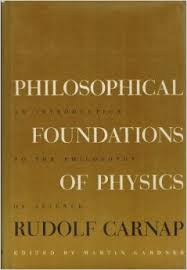
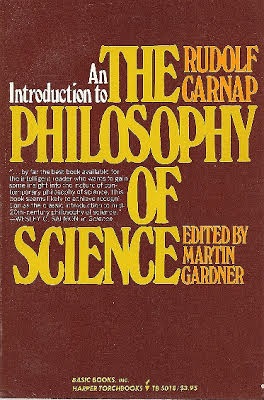
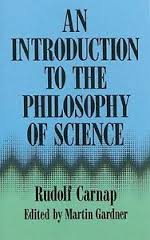
Philosophical Foundations of Physics (Basic, 1966, 310 pages) was later reissued as Introduction to the Philosophy of Science (Basic, 1974, and Dover, 1995, 12 + 300 pages). All incarnations credit Carnap as the author, and Martin as the editor. On page 201 of his memoirs, Martin writes,
"Every idea in the book is Carnap's, every sentence is mine. The collaboration was one of the happiest tasks of my life."
Around 1947, Martin moved to New York City. Within a few years he had published several articles in The Journal of Philosophy, as well as one called "Order and Surprise" in the University of Chicago affiliated Philosophy of Science Quarterly (Vol 17, No 1, 109–117, Jan 1950).
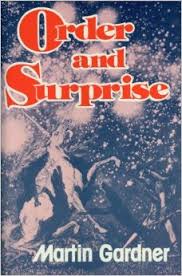
Order and Surprise (Prometheus, 1983, 396 pages) collected essays and reviews written over a four decade period. Topics and writers covered include Oz, Robert Maynard Hutchins, H. G. Wells, George Orwell's Nineteen Eighty-Four, cultural relativism, Karl Popper, Einstein, Kafka, Updike, Vance Packard, Colin Wilson, and Lewis Carroll.
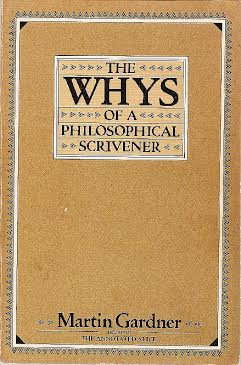
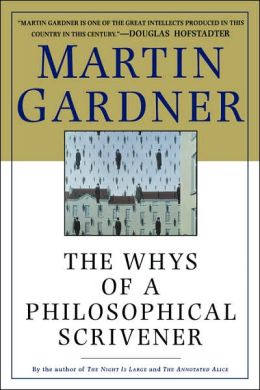
The Whys of a Philosophical Scrivener (William Morrow, 1983, 450 pages, and St. Martin's, 1999, 485 pages).
The book comes with endorsements from Douglas Hofstadter, Stephen Jay Gould and Noam Chomsky.
In a 2005 interview, Martin commented:
"I think my Whys of a Philosophical Scrivener is my favorite because it is a detailed account of everything I believe.""The book is controversial because almost everybody who believes in a personal god is into an established religion. The idea of believing in God and not being affiliated with any particular religion is a strange kind of a position to take."
George Groth gave it a colorful review in Gardner’s Game with God in the New York Review of Books. (It's worth researching Groth!)
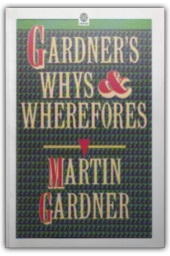
Gardner's Whys and Wherefores (University of Chicago Press, 1989, and Prometheus, 1999, 272 pages) has essays and reviews taking in The Ancient Mariner, computers, mathematics, Ulysses, Wells, Chesterton, Dunsany, Arthur C. Clarke, Feynmanm, Quine, Anno, and artificial intelligence (via Marvin Minsky's Theory of Mind).
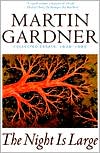
If there is one volume that represents almost the full gamut of Martin's extraordinarily diverse interests—but not his output—it's The Night Is Large: Collected Essays, 1938–1995 (St. Martin's, 1996, 19 + 587 pages). This tome is divided into seven parts: Physical Science, Social Science, Pseudoscience, Mathematics, The Arts, Philosophy, and Religion. Curiously, Mathematics gets the fewest number of pages here—a mere 40. Leon Harkleroad reviewed it in Modern Logic (Vol 8, No 3 & 4, 2001, 117–119).

From the Wandering Jew to William F. Buckley Jr.: on Science, Literature and Religion, (Prometheus, 2000, 350 pages) contains ten essays and nineteen reviews on such favorite areas as mathematics, wordplay, chess, science fads, astrology, psychic surgery, Lewis Carroll, Wells, and Christian Science, as well as Carl Sagan and Paul Edwards.
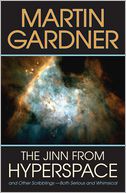
In The Jinn from Hyperspace (Prometheus, 2007, 307 pages), subtitled "and Other Scribblings–Both Serious and Whimsical," Martin takes on homeopathy, false memory syndrome, AI, physics, and mathematics, along with Ramon Lull, and G. K. Chesterton once again. It's divided into four sections, "Science, Math, and Baloney," "Literature," "L. Frank Baum," and "Lewis Carroll." Some of the chapters had appeared earlier in publications as diverse as Skeptical Inquirer, Math Horizons, and The New Criterion.
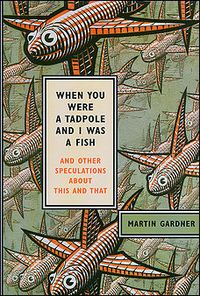
When You Were a Tadpole and I Was a Fish (Hill & Wang, Oct 2009, 256 pages) is subititled "and Other Speculations About This and That." It's Martin's last collection of essays and reviews, twenty-four in all. The material spans mathematics and logic, science and fringe bogus science, literature, religion and politics. Oz, Santa Claus, and God make appearances, as does Langdon Smith's poem on evolution which gave the book its title.
At G4G11 in Atlanta in Mar 2014, Martin's son Jim said that his dad's favorite philosopher was William James.